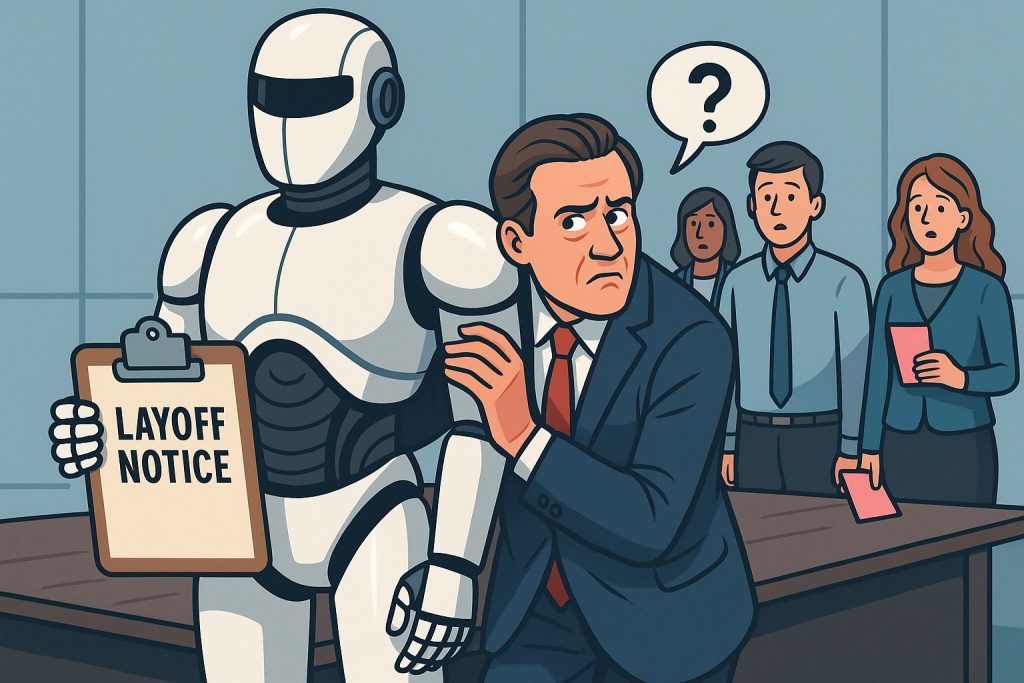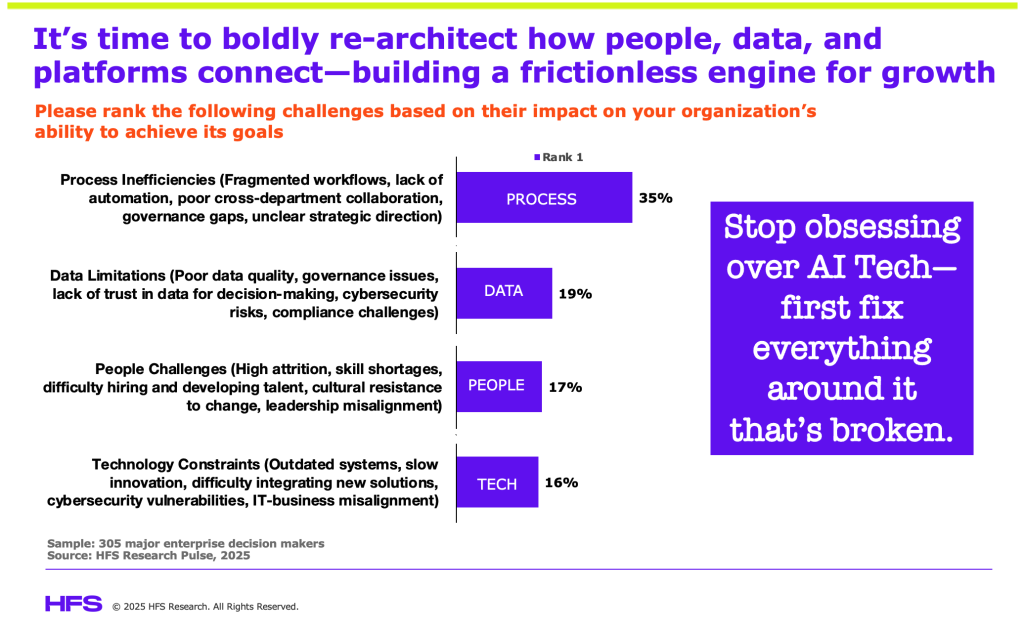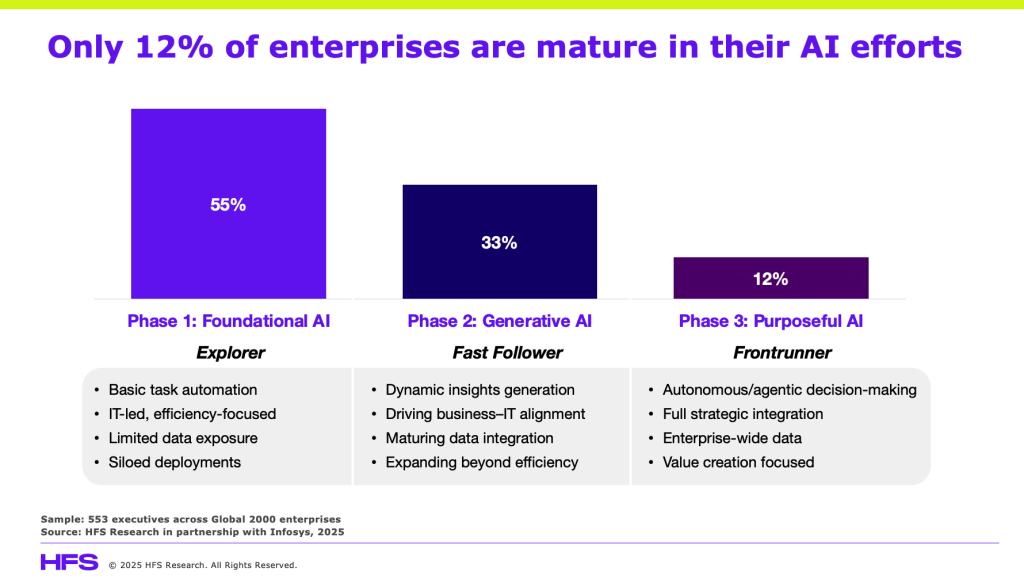
Layoffs are accelerating again, but this time AI is becoming the cover story, offering a convenient narrative to justify long-delayed changes under the guise of technological progress.
Microsoft, Amazon, Citigroup, UPS, Google, McKinsey, Deloitte, PwC, and many others have all recently laid off staff under the AI smokescreen. The headlines say it is about automation and AI readiness, but that is not the whole story… not even close.
What we are seeing is not just automation-led efficiency, it is a structural shakeout triggered by board pressures to cut costs, eliminate underperforming middle layers, and move away from legacy talent strategies. The corporate world has also experienced high-wage fatigue, where many staff have had significant wage growth, especially since the inflationary pandemic years, and it’s simply very expensive to maintain staff on these high salaries and other benefits.
Many of these firms have been waiting for an excuse for years to trim their fat, and now they have it. We will, however, give some credit to TCS’s CEO Krithi, who positioned their recent “restructuring initiative as being aimed at transforming the company into a future-ready organization.” At least there is some admission here that many staff at mid-senior levels were no longer delivering value in a challenging market environment, and it was time to trim the fat. Not one mention of AI…
You can run from your past, but it will catch up with you if you can’t change your habits
Companies are making moves they have postponed for years. Cuts labeled as future-proofing are often strategic resets that should have happened long before AI showed up. Yes, some AI deployments are proving valuable. But not at the scale required to displace tens of thousands of roles overnight.
In fact, we were having exactly the same conversations when RPA was hyping markets a decade ago, but the technologies couldn’t scale up and deliver like what we are witnessing with GenAI and agentic. It is easier to blame emerging tech than to admit to dysfunctional processes, poor-quality data, bloated hierarchies, poor skills development, or misaligned workforce structures.
Recent research (below) clearly shows that the issues plaguing major enterprises in achieving their goals are not technology constraints but all the non-technical areas that are blocking the ability to exploit AI:
Leaders need to stop pretending all of this is an AI transformation. This is not an overdue cleanup… it is a premature dismantling of work structures without the foundations for what comes next. What is clear is that you will fail with AI if you do not focus on your processes, data, and people first.
Cutting early-career talent creates long-term fragility and trashes your culture
Some of the clearest signals are coming from the firms that once defined the pyramid talent model: the big four. Deloitte, EY, PwC, and KPMG have sharply reduced graduate recruitment, with cuts as high as 44 percent compared to last year. At the same time, mid-level roles are being protected, senior compensation is climbing, and administrative tasks are being offshored to lower-cost hubs.
The rationale? AI can automate a lot of entry-level work. But AI is not ready to own this work at scale, and many of these roles were not just about task execution, they were about long-term capability building. Cutting them removes a foundational layer of growth, learning, and leadership development. It weakens succession pipelines, institutional knowledge transfer, and creates brittle organizations with no buffer to absorb future shifts.
This pattern is not limited to the big four. The US government is accelerating generative AI pilots while significantly cutting civil service positions. Media organizations like Business Insider are adopting AI-first strategies while laying off large portions of their newsrooms. B2B companies are reducing headcount in marketing and sales functions in anticipation of productivity gains that have yet to fully materialize.
Yet few of these decisions are supported by robust evidence of AI delivering sustainable value at scale. Instead, many are driven by cost-cutting mandates, simplification goals, and boardroom pressure. AI is being positioned as a convenient explanation for broader organizational shakeouts.
Crucially, early-career roles are not collateral damage, they are a deliberate target. Firms are pulling back on graduate and entry-level hiring, assuming that AI will render those jobs unnecessary. But AI can only automate fragments of work, not own entire workflows. These junior positions were never just task execution lanes—they were foundational to future leadership development, capability building, and institutional continuity. Eliminating them puts long-term organizational stability at risk. We are not just trimming headcount, we are erasing the scaffolding of future expertise.
Smart enterprise leaders are leaning into both young talent and emerging AI opportunities together
Enterprise leaders should proactively invest in young talent by aligning graduate recruitment with evolving skill requirements, emphasizing continuous learning, and developing pathways that enable graduates to work creatively and effectively with AI tools. Lean into both by creating roles that complement AI—focusing human effort on critical thinking, creativity, ethics oversight, process and systems governance, and innovation management.
The US, for example, has several robust training initiatives underway to support AI workforce development. These include NSF-funded National AI Research Institutes focused on sector-specific skills, the Department of Labor’s AI Apprenticeship Program emphasizing practical AI training, the Department of Commerce’s AI Centers of Excellence facilitating industry partnerships, and Workforce Innovation Grants aimed at boosting AI education in community colleges and regional institutions.
The work has not been redesigned, only reduced
Here is the real risk. Enterprises are shrinking their workforce without reshaping the work. The assumption is that AI will simply fill in the gaps. However, only 12 percent of organizations report a somewhat mature level of AI readiness, and most of them acknowledge that they have a long way to go (see exhibit below). That makes the scale of workforce cuts hard to justify on the basis of actual deployment.
Most of the AI used today still relies on human orchestration, supervision, and refinement. Few enterprises have established clear handoffs between agents and people, and even fewer have rearchitected workflows to reflect new levels of autonomy or human-AI collaboration:
We are clearing out talent faster than we are designing the next delivery model, and that creates exposure, inconsistent outcomes, and over-reliance on immature systems. Fragile operating models are held together by duct tape, not by design.
This is not the AI revolution most leaders say they are preparing for. It is a pause on hiring disguised as foresight. A reversion to old cost takeout habits, rather than a step toward adaptive work models.
Where enterprise leaders now need to focus
If you are an enterprise leader watching this unfold, it is time to move beyond reactive cycles. Here is where to focus instead:
- Map the work, not just the roles. Understand what outcomes your teams are responsible for and where AI can assist rather than own it. Decompose the work before deciding who or what should do it.
- Stop hollowing out your future talent. Reducing early-career roles may create short-term savings but also destroy long-term agility. Invest in hybrid learning environments where new talent can collaborate with AI systems and senior mentors.
- Redesign for orchestration. Do not just implement AI tools. Build systems around them that define how work is triggered, handed off, evaluated, and evolved. Think beyond productivity into reliability and resilience.
- Ground your decisions in data, not buzz. Track what AI is actually delivering, where it saves time, reduces errors, or enhances quality. Make staffing decisions based on this evidence, not aspiration.
- Challenge your narrative. If you are using AI as the justification for layoffs, be honest about what is really driving the shift. Employees, customers, and shareholders are watching and expecting more than spin.
This is not about being anti-AI. It is about building enterprise systems and workforces that are designed for what is coming, not just shedding what is familiar. AI may be the accelerant, but the redesign is still up to us.
Bottom line: Stop optimizing for a future you have not yet built
Enterprises are rushing to cut headcount for AI efficiency without having done the work to understand what good looks like. Most have not redesigned roles, workflows, or orchestration layers. They are simply hoping that fewer people plus more tech will equal progress. That is not a strategy; it is a gamble.
Posted in : Agentic AI, AGI, Artificial Intelligence, Automation, Buyers' Sourcing Best Practices, Change Management, Employee Experience, GenAI







